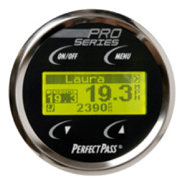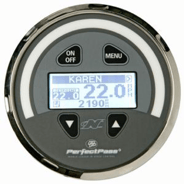Anyone that knows me well is aware of how much I like wakeboarding. It’s been a personal passion of mine for the past 20 years. That’s why I’m so connected to this client’s case.
The Challenge
Perfect Pass was a pioneer in the ski and wakeboard boat speed control. They developed a system with an extremely precise cruise control designed specifically for high-performance water ski and wakeboard boats.
Controlling boat speed is critical to the quality of the sport and adds to the safety of water skiers and wakeboarders. And while cruise control has long been a mainstay for land-based vehicles, it’s more challenging to accomplish on the water.
Still Perfect Pass rose the challenge, creating created a system that excelled at boat speed control. Even amateur boat drivers were able to effectively pull wakeboarders without much hassle. In fact, the system was so good that it was dubbed “The Marriage Saver.”
For context, many couples would do these water sports together but would often argue over the boat’s speed. This system mitigated, and often eliminated, these arguments (hence the popular nickname).
Due to the success of the system, the client was able to build its business around it, making it the centerpiece of their product offering.
Not surprisingly, I had this system on my boat and loved how well it worked. However, as someone whose spent their career in the LCD display space, I wasn’t thrilled about the display aspect of the system.

The Solution
First, it was an older technology—it used a monochrome display that didn’t match the instrument panel. I felt compelled to contact the client team, who informed me that they had simply selected an off-the-shelf product and designed the system around it.
After multiple discussions and continued interest from the client, I recommended a high-performing FSTN. This would provide a more paper-white, neutral display with a white backlight. That way, the display better matched the different graphics present on the many types and varieties of boats.
In addition, I helped them simplify their product design. Previously, they used a complicated set of two interface boards and connectors, which then connected to the product’s CPU. To remove this complexity, I took as many components and connections as made sense and built/incorporated those elements into the display itself, eliminating numerous connectors.
 The Results
The Results
This is important because every time you remove a connection, it improves reliability. In addition, since the connections on the display side were solder based, there was additional reliability gained over pin-to-pin or board-to-board connections.
The benefits beyond aesthetics and reliability was cost savings. As well, fewer connectors and other subcomponents meant less that the client had to purchase.
This case study is a perfect example of a custom display being a lower-cost solution. (You can assess whether you should go custom by starting with this post.)
Need a new supplier that understands your unique display needs and can produce custom displays that address them? Let us help. Contact us.






